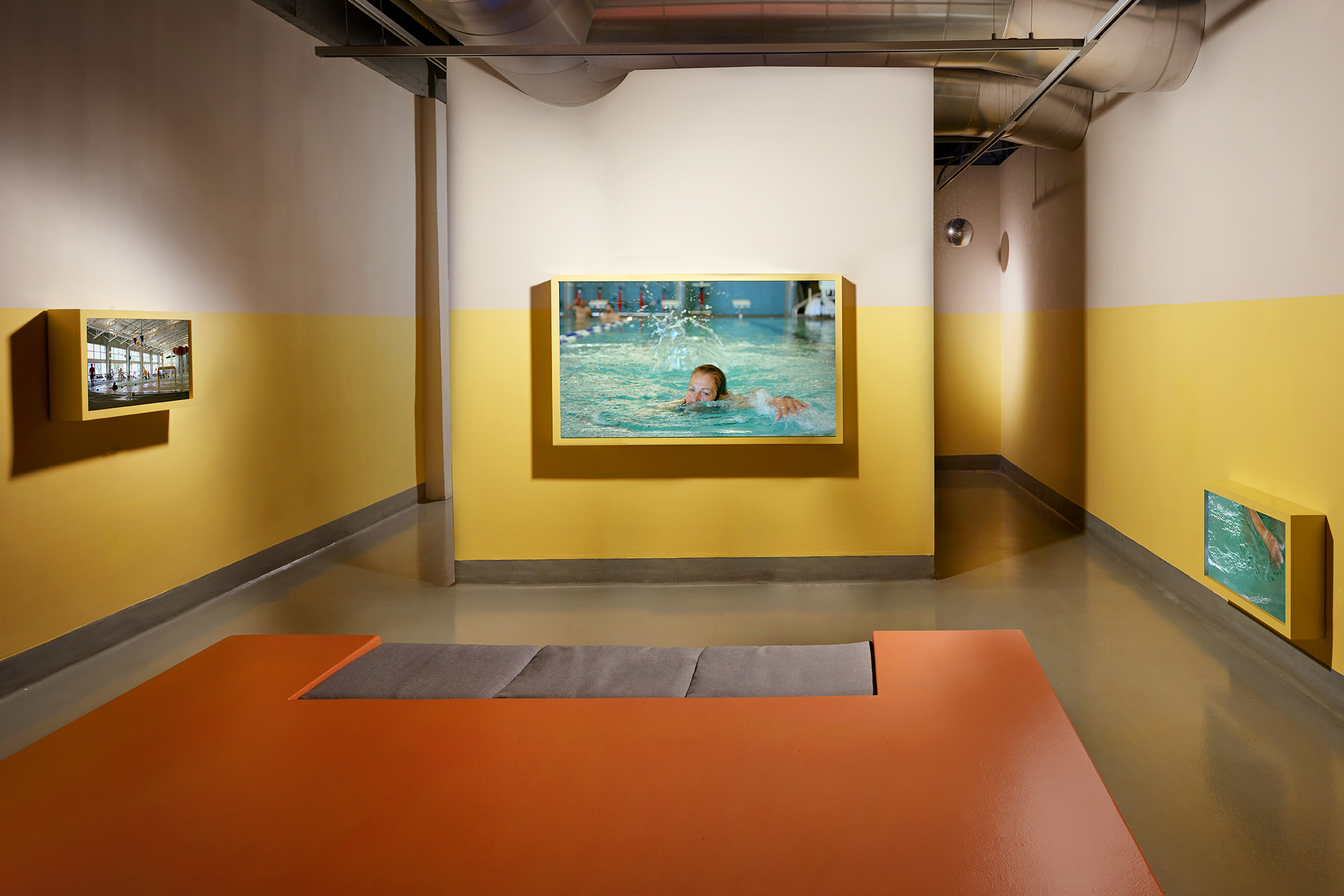Erin Johnson fuses art, technology and activism
April 27, 2018
 Courtesy of Erin Johnson
Courtesy of Erin JohnsonI met Visiting Assistant Professor of Art Erin Johnson in their studio in the Edwards Center for Art and Dance. Midday sun streamed in through room’s the large windows, generously lighting the space. There was very little furniture in the room, giving it an airy quality. We sat at Johnson’s work table.
Johnson is in their third year at the College and has, in their short time here, already made an impact.
Alongside two other professors, Johnson was awarded the 2018 Donald Harward Faculty Award for Service-Learning Excellence. The honor was awarded by Maine Campus Compact, a group whose mission is to connect higher education to service and annually awards Maine educators who integrate community service into their curricula.
“I felt very honored to be nominated and to represent Bowdoin,” Johnson said. “I’m excited to continue to develop classes that move the learning inside the classroom outside to the larger community and the kinds of challenges that provides.”
Johnson’s work and interests are the very definition of interdisciplinary. While an undergraduate at Warren Wilson College, they designed their own major called Art and Community Organizing.
“My work is focused around building projects over time with communities. There is a natural progression between seemingly disparate parts coming together in my activist practice and my art practice,” Johnson said.
Their undergraduate practice focused primarily around printmaking and book arts, though they began to incorporate video and sound into their work as a graduate school at the University of California, Berkeley.
“[Book arts] has a natural translation to video art because book arts and video art are both time-based experiences,” they said.
Johnson brings their interdisciplinary interests into the courses they teach at Bowdoin, many of which are cross-listed with the Digital and Computational Studies (DCS) department. This semester, the course titled Art, Technology, and Design for Social Change combines several fields of study, and in the process asks students to explore answers to a series of questions.
“How do digital media and technology affect the way we relate to each other and the larger community?” Johnson prompted. “How can we harness and utilize different skill sets, whether they’re visual or programming or coding-based to do work that moves us toward the greater good?”
Through the McKeen Center for the Common Good, Johnson has connected the course with two organizations: Avesta Housing and Catholic Charities Refugee and Immigration Services. Johnson sat down with both organizations to create a list of challenges and concern voiced by the non-profits.
“The challenges included, ‘we want the general public to be more engaged with the issue of affordable housing,’ or, ‘we want people who are experiencing homelessness or are waiting for affordable housing on a list to have access to be able to speak with their legislators about issues they’re confronted with,’” Johnson said.
Art, Technology, and Design for Social Change prioritizes the concerns of its partnering organizations over technology.
“We start with the question, the challenge,” Johnson said. “We figured out which tools are best suited to dealing with that challenge, instead of starting with the technology and [trying] to push it into something.”
At the beginning of the semester, Johnson presented the challenges of the two organizations to their students, who then picked challenges of interest and worked in small groups to create different prototypes, responding to feedback from partnering organizations throughout the process.
“Some students are creating websites; some students are creating data visualizations that are projected in windows for the public to see; some students are creating videos that are embedded in physical objects that tell stories about people who have secured affordable housing,” Johnson said.
Johnson explained that this class is different than others that they have taught because of the sustained relationship between the students and the organizations. They listed many other ways that the class is designed to benefit students: from learning about the state of Maine to how to work well in a group.
“By giving students open-ended challenges where they find their own path, that introduces a lot of moments of precarity, contingency and potentially anxiety,” Johnson said.
Despite—or maybe because of— that open-endedness Johnson says that their students’ work this semester has thrilled them.
“They have come up with astounding, elegant, innovative, interesting projects that I, as the instructor, could never have dreamed of. They’ve been led through the process, but the process is theirs.”
Johnson formerly worked as an organizer at Service Employees International Union (SEIU), and finds that community organizing skills are useful in their work as an artist.
“The skills that are useful in both realms can be employed in a single art practice. The visual thinking processes that you use in art-making can be employed in a community organizing context,” they said.
Their exhibition in the Portland Museum of Art Biennial displays their argument perfectly. The piece, entitled “The way things can happen,” depicts some of the 5,000 residents of Lawrence, Kansas who were cast as extras in the 1983 film “The Day After.” Johnson was interested in investigating the way the film blurred the distinction between the fictional narrative of the film and the actual lives of Lawrence’s citizens. To complete the project, Johnson had to utilize their community organizing skills.
“I’m knocking on strangers’ doors, saying, ‘Hi, were you in this film? Can we meet? Can we talk?’ [I was] building a community of people to make this video art project that lives in a museum or gallery,” they said.
Johnson invites members of the Bowdoin community to join them and the students enrolled in Art, Technology, and Design for Social Change for a community ‘report-back’ in which students will summarize their projects. The event will be held on Tuesday, May 8 from 4-5 p.m. in the Shannon Room in Hubbard Hall.

Comments
Before submitting a comment, please review our comment policy. Some key points from the policy: